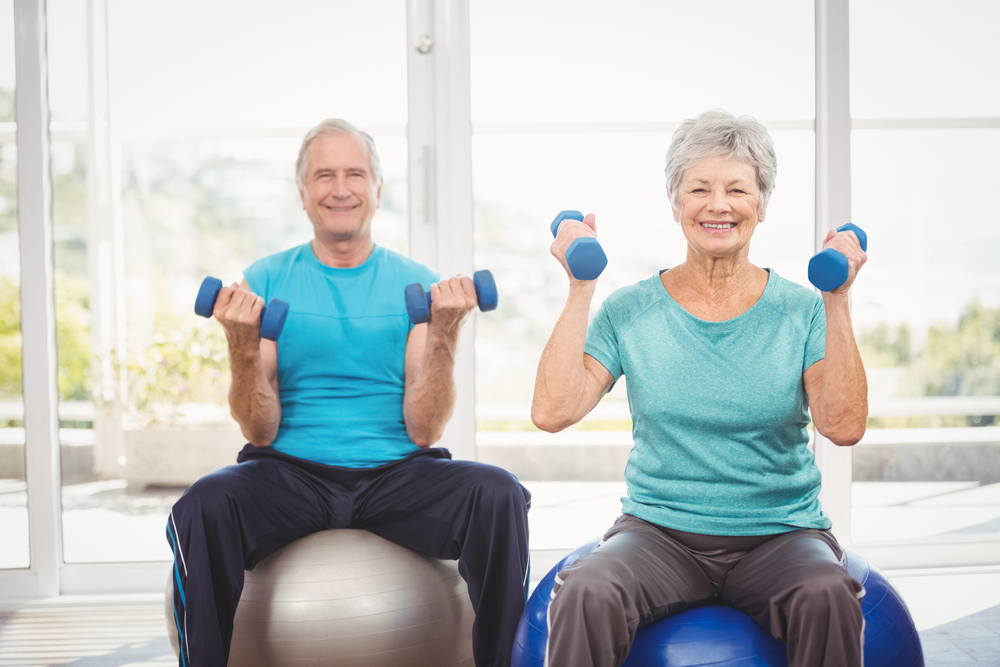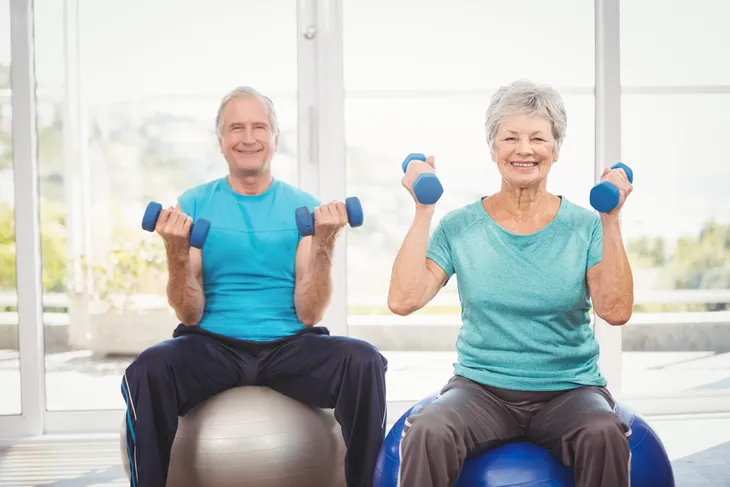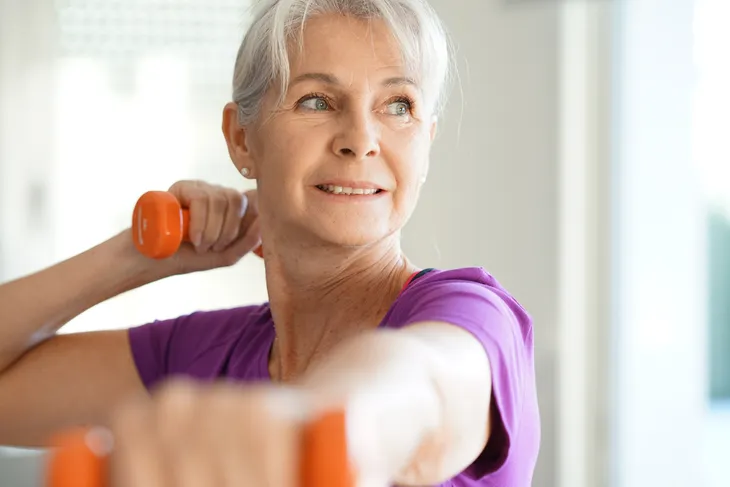Sarcopenia is the loss of muscle mass as a result of the natural aging process. The loss of muscle leads to loss of independence, balance, gait changes, and overall strength. It also makes simple, everyday activities much more challenging. As we age, our bodies ability to produce the proteins that the muscles need to grow decreases. When protein production falls, individual muscle cells get smaller.
This is why exercises such as strength training are so important. They help maintain and strengthen our muscles, particularly as we age — when we need it the most. Follow along as we explore the many benefits of strength training for seniors, including a video with specific exercises seniors (and beginners) can try at home.
Want senior content delivered straight to your inbox? Sign up for our exclusive email list and receive articles and news on diet & nutrition, fitness, and mental health dedicated specifically to our senior audience!
Declining Muscle Mass
The International Osteoporosis Foundation (IOF) states that muscle mass starts to decline around the age of 40, and the loss of muscle tissue may progress more rapidly when a person reaches their 60’s and 70’s.
Depending on the individual, some lose 3 to 8-percent of muscle mass per decade. The loss of muscle mass involves both a reduction in the number of muscle fibers and a decrease in their size. The combination of fewer and smaller muscle fibers causes the muscles to atrophy or shrink.
What is Strength Training?
Strength training (resistance training) uses resistance from weights (dumbbells), resistance bands, weight machines, or body weight. The muscles contract which builds the size and strength.
Strength training on a regular basis will work the muscles more than they are accustomed to working which is how they become stronger and more toned. Strength training also strengths the bones, ligaments, and tendons. All of this will help make joints more stable and less prone to injury. It also makes everyday tasks easier with age.
According to the Centers for Disease Control and Prevention (CDC), older adults should participate in activities that include muscle strengthening for at least two days a week. All muscle groups should be included in your workout. including legs, arms, chest, shoulders, back, and core.
Benefits of Strength Training in Seniors
Strength training has many benefits for both the body and mind.
- Osteoporosis Prevention: At Tufts University, a study on older adults showed that strength training can add bone density. By stressing your bones, strength training can increase bone density and reduce the risk of osteoporosis.
- Weight Management: Strength training can help manage or lose weight. It can also increase the metabolism to help burn more calories.
- Arthritis Pain Reduction: According to Tufts University research, strength training is one of the best ways to get arthritis pain relief because it lubricates the joint. It also strengthens the muscles around the joint to provide better support.
- Sharpen the Mind: Some research suggests that regular strength training may help improve thinking and learning skills for older adults. Memory and overall cognitive functioning improves.
- Functional Independence: The ability to remain independent is extremely important as we age, but we must be able to do this safely. Tasks such as picking up grocery bags, grandchildren, getting up from a chair, or even going up and down stairs will improve with better balance.
- Aid Recovery: It has been shown that faster recovery from an illness or injury occurs when strength training is part of your workout regimen.
- Improve Sleep Quality: Studies show after strength training, older adults fall asleep faster and sleep better and longer.
Overall, strength training is the most effective treatment to slow down and prevent muscle loss and other age-related health issues.
Strength Training Full Body Workout For Seniors And Beginners
This entire workout is seated and low impact. We will be using dumbbells for our strength training, but you can always substitute dumbbells for a lighter source of weight like bottles of water or cans of soup. You can also do this routine without weights to benefit from a wider the range of motion.
If you’re looking to put in a little more work you can always go through this routine twice and benefit from the extra effort you’re putting in!
Remember to only do movements that you are comfortable with and never force anything that causes pain or discomfort. Also, don’t forget to drink lots of water and have a great workout!
For more videos by Meredith, check out Senior Fitness with Meredith.






